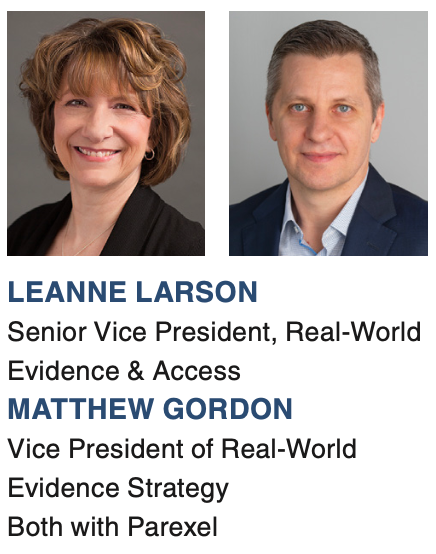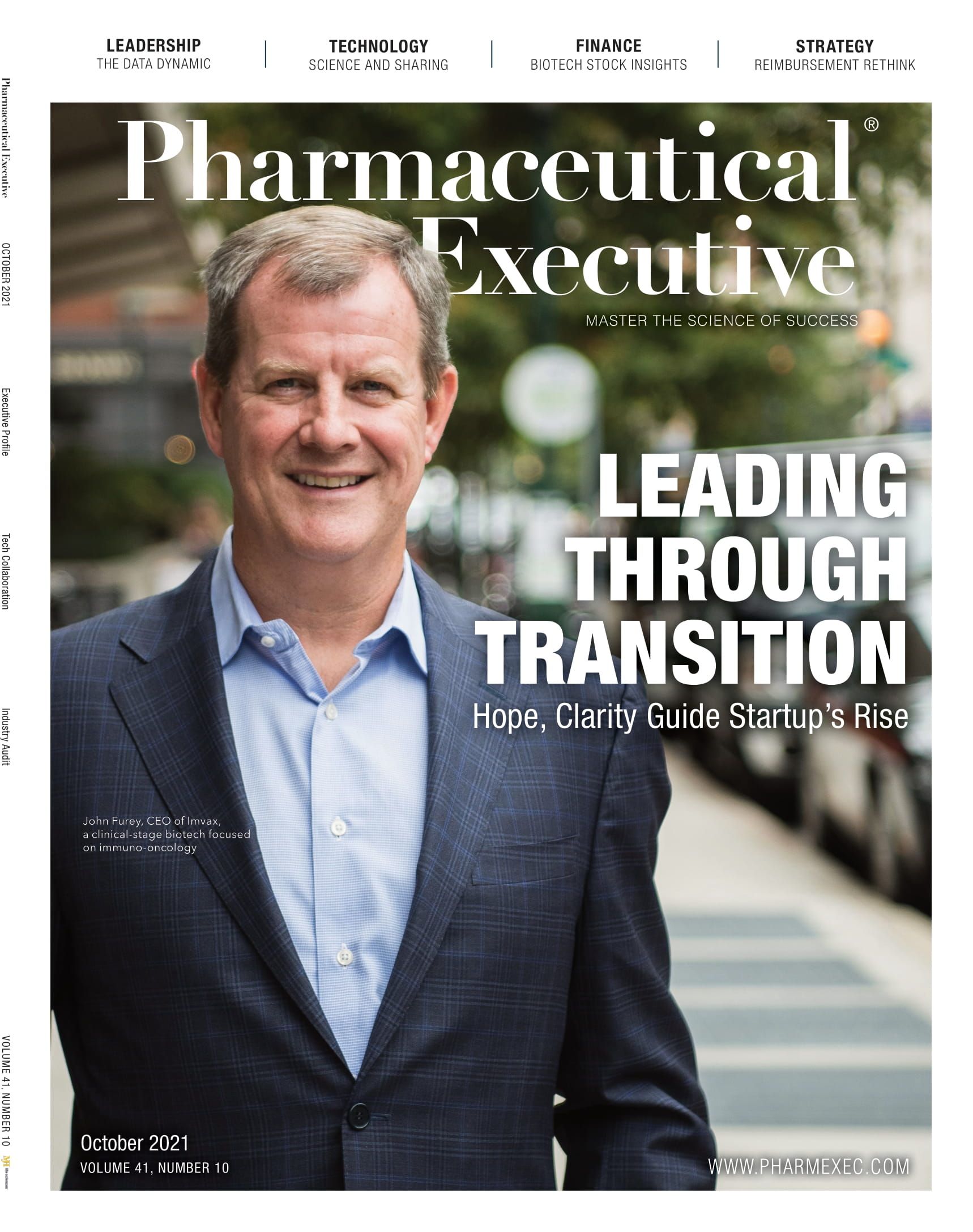Industry Game Changer: RWE Impacts on Drug Development
COVID may have given real-world evidence the boost it needed to become routine, especially in areas that demand research innovation and advancement.

COVID-19 changed everything. For clinical development, the pandemic highlighted the expanding role of real-world evidence (RWE) and the need to think about how data can be fit-for-purpose to meet drug approval and market-access standards. The moment demanded action, and the industry and researchers delivered.
In nine short months, the Pfizer-BioNTech COVID-19 vaccine was granted FDA approval. The 360,000-page application confirmed the safety and efficacy of the landmark vaccine and was approved in record time. However, this approval package wasn’t enough to answer the many questions that this pandemic posed and that were so critical in helping us understand how to treat and manage this devastating infection. We needed more, and we needed it quickly, to guide the decisions physicians, hospitals, and patients were making every day.
RWE—insights derived from data describing the usage and benefits of a medical product based on data collected outside of clinical trials through methods such as electronic health records or patient-generated data in home-use settings—provided these much-needed insights throughout 2020 and still today. Alongside FDA’s approval decision, the pandemic saw an explosion in programs and tools gathering data on COVID-19’s progression-tracking patient symptoms, treatments, and outcomes globally both from clinicians and patients. This new evidence has been critical in helping us better understand—in real-time—the pandemic’s course, the treatments being utilized, and how patients fared. While the needed, rigorous clinical trials were underway to test both the vaccines and numerous emerging treatments, RWE gave us an early view of the power and value of real-world data, and to the evolving approaches to collecting and evaluating it.
The pandemic also drove a seeming evolution in research design and approach—with key trials, like the RECOVERY trial in the UK, employing a more-traditional clinical trial design, but with real-time analysis and reporting to ensure that clinicians and patients benefitted from data and insights as they emerged. At the same time, the urgency of COVID-19 also spawned new collaborations and partnerships, bringing together key researchers, patient advocacy groups, drug developers, academia, and government entities to help drive results. The COVID Symptom Study is one such collaboration. An app-based, real-world COVID-19 registry initiated by researchers in the UK and US and with engagement from numerous universities, patient groups, and long-standing research studies, this innovative real-world study has gathered self-reported data from almost 5 million people in the UK and US.
This explosion of evidence during the pandemic has indeed highlighted the value of RWE and its ability to provide the clinical development industry with more diverse information and insights that will enable regulators to make decisions more quickly and confidently on the safety, efficacy, and effectiveness of therapies. With this boost in RWE’s generation and application, it’s become evident that it will play an increasingly important role in drug development, particularly in therapeutic areas such as rare diseases and cell and gene therapy, where research innovations are so urgently needed.
The potential OF RWE
Traditional randomized, controlled clinical trials are essential in our drug evaluation process, allowing us to clearly see a product’s true effects. The strictly defined patient populations in a clinical trial are inherently homogeneous, allowing analysis of the product’s effect without any worry that other treatments or medical conditions contributed to the patients’ outcomes. But this clarity comes at a cost. We know that in the real world, life is much more complex, and our real assessments of outcomes—of longer-term safety and effectiveness—need to reflect this complexity. Typically larger and longer in duration than clinical studies, RWE studies provide more information and data to develop evidence and help regulators understand the outcomes of a product in routine care. RWE is uniquely able to help us understand that patients in the real world aren’t homogeneous, and that understanding their differences is the key to better treatment.
The stakeholders across our healthcare systems look at RWE through their respective lenses. Regulatory agencies want to know whether a product works and whether it is safe. Payers want to understand the product’s value—is it “worth it,” particularly compared to other treatments already available? And clinicians want to know which patients will benefit most from the new treatment. For patients, RWE represents a potentially more efficient and effective way to drive reimbursement for these critical new therapies.
What is most promising about RWE, though, is its power to help product developers get the right treatment to the right patients at the right time. With the rising cost of healthcare, we need to be more specific and directed in our approach to treating patients. The imperative for personalized medicine is in fact stronger today than ever before—for better understanding the genetic origin and markers of disease and their implications for patient outcomes, for understanding which patients simply won’t respond to certain therapies. It allows us to put patients at the heart of our approach, giving them the best chance at improvement, or even a cure.
External control arms, one of the more exciting applications of RWE today, have seen much interest in recent years. This approach, which uses patient-level data sourced from real-world retrospective studies, electronic health records, existing datasets, wearable technologies, and even control arms from other completed clinical trials, provides valuable real-time insights into the patient experience and outcomes. They can identify patient-population signals that may be undetected in randomized trials, and mimic randomized datasets providing flexibility for public health crises like COVID-19 or for diseases with smaller patient populations.
Importantly, external control arms can help accelerate a product’s path to market by eliminating the need to recruit and manage a separate control arm in a pivotal trial. Instead, the control arm is created from a source external to the trial; getting the data elsewhere, external to the trial itself, may cut the number of patients needed by as much as half, typically reducing both study timelines and costs. Importantly, studies with external controls are also often more attractive and appealing to patients. For patients with rare or severe diseases, clinical trials often represent a chance at treatment where other therapies are not available or effective, but at the risk of being randomized to either a placebo control or a potentially less effective treatment. Externally controlled studies, though, eliminate that risk; patients are guaranteed to receive the promising new therapy.
While regulators have considered external control data in a number of studies and have applied it in their decisions in a growing number of reviews and approvals, they have mostly focused on rare diseases and oncology drug candidates to date. In these settings, a more traditional study design can be difficult to enroll, or the need for treatment may be so strong, randomizing to a control group may be simply unethical.
With this evolving landscape, there is clearly a growing recognition of the value of these data in regulatory decisions. Driven by the 21st Century Cures Act in the US, FDA is expected to soon release its guidelines for use of RWE in regulatory decisions; other agencies around the world, including China’s National Medical Products Administration (NMPA), have also already issued guidance to govern their decisions.
While our interest in RWE tends to gravitate to new therapies and to the critical regulatory approval environment, it also shows great promise for approved therapies, allowing the industry to answer long-term safety questions, ensure the right information is provided to payers, and better understand what happens when a product is introduced into the market.
The challenges OF RWE
While RWE has shown great promise and has already contributed significantly to our drug development and commercial landscapes, challenges to its use and application do remain. There is a misconception that it’s always going to be faster, easier, and cheaper to provide insights with existing data, but we know that’s not always the case. While it can offer important insights and may be able to do so more quickly or less expensively, we also need to be cognizant that we are still advancing our understanding of how best to work with these data, and how to confront some of the challenges and limitations of this approach.
In recent years, our ability to access existing sources of real-world data has exploded, with new ways to utilize electronic medical record (EMR) and other data seemingly coming online each week. But access doesn’t always equal application. We recognize today that there is no single dataset that will answer all questions, and a single dataset may not even be adequate to answer a single, specific question. Commonly today, we’ve found that multiple data sources are required to ensure the evidence generated is robust.
Indeed, we continually need to evaluate the structures, completeness, and quality of the data and ensure they are fit-for-purpose for the analysis required and the questions we are trying to answer. It’s not unusual today to see that a hybrid approach is needed—collecting data from existing datasets while also gathering data prospectively from sites to ensure that specific, critical data fields are captured with the completeness, depth, and accuracy needed to support the study analyses.
There is also the ongoing need to understand the differences between types of data and ensure transparency in the assessments made on the data relevancy and quality. It is important for sponsors to work with the right partners to find the right approach to meet their objectives.
RWE is no longer an innovation. It is the “here and now,” central to how the industry and stakeholders need to approach drug development and to ensure that products are best supported throughout their full lifecycle. Aligning evidence-generation planning with both the development and commercialization pathways is key to ensuring patients truly have access to innovative therapies, today and in the future.
Leanne Larson, Senior Vice President, Real-World Evidence & Access, Matthew Gordon, Vice President of Real-World Evidence Strategy, both with Parexel

Addressing Disparities in Psoriasis Trials: Takeda's Strategies for Inclusivity in Clinical Research
April 14th 2025LaShell Robinson, Head of Global Feasibility and Trial Equity at Takeda, speaks about the company's strategies to engage patients in underrepresented populations in its phase III psoriasis trials.
Key Findings of the NIAGARA and HIMALAYA Trials
November 8th 2024In this episode of the Pharmaceutical Executive podcast, Shubh Goel, head of immuno-oncology, gastrointestinal tumors, US oncology business unit, AstraZeneca, discusses the findings of the NIAGARA trial in bladder cancer and the significance of the five-year overall survival data from the HIMALAYA trial, particularly the long-term efficacy of the STRIDE regimen for unresectable liver cancer.
Expanding Immune Response Testing to Support Vaccine Development
April 22nd 2025Nigel McCracken, chief operating officer, Virax Biolabs, discusses the expansion of its ViraxImmune platform into areas such as transplant monitoring, vaccine efficacy, latent virus reactivation, and CAR T cell therapy.